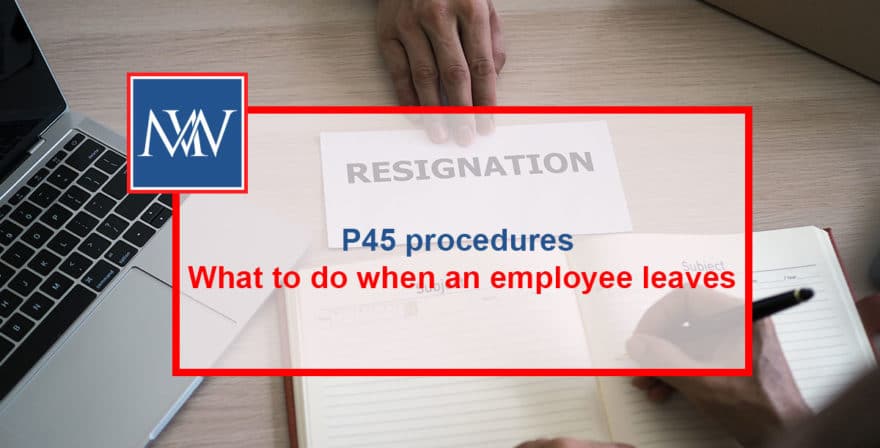
P45 Procedures – What to Do When an Employee Leaves
When an employee leaves, there are various procedures that need to be followed from a payroll perspective. These include telling HMRC that the employee has left and issued the employee with a P45.
Notifying HMRC
When an employee leaves, it is important to let HMRC know. This is done via the RTI system.
The employee’s leaving date should be entered on the Full Payment Submission when reporting pay and deductions for the final time. The leaving date should not be before the date on which they receive their final salary, which will normally be their last working day.
Issuing a P45
The P45 is an important document as it is the way in which pay and deduction details are transferred from one employer to the next. As PAYE is operated on a cumulative basis, this transfer of information is crucial, particularly where an employee changes jobs during the tax year.
There are four parts to the P45 – Parts 1, 1a, 2 and 3.
Historically, Part 1 of the P45 had to be sent to HMRC. However, the information contained on the P45 is now sent to HMRC electronically via RTI.
The employer must give parts 1A, 2 and 3 of the P45 to the leaving employee. The employee should retain part 1A and give parts 2 and 3 to a new employer.
However, it should be noted that when an employee retires and is paid a pension by the same employer, the employee is not regarded as having ‘left’ and should not be given a P45.
Paying an employee after the P45 has been issued
If a payment has to be made to the former employee after the P45 has been issued, the following procedure should be followed:
- deduct tax using code 0T (rather the employee’s previous code) on a ‘week 1’ or ‘month 1’ basis;
- deduct National Insurance contributions (unless the payment is a redundancy payment) and any student loan repayment as normal, but treating it as a weekly payment if it is an irregular payment, such as accrued holiday;
- report the payment and deductions in the next FPS, using the employee’s original ‘date of leaving’ and, where relevant, ‘payroll ID’, setting the payment indicator to ‘payment after leaving’;
- provide the employee with written confirmation of the payment, showing the gross amount of the payment and the deductions; and
- add the additional payment to the ‘year to date’ field where it falls in the same tax year.
The employee should not be given a new P45.
For more information, Book a Free Consultation
Need Accountancy Support?
For information on bespoke training, or if you have any other questions for Makesworth Accountant, please fill in your details below
















 151
151